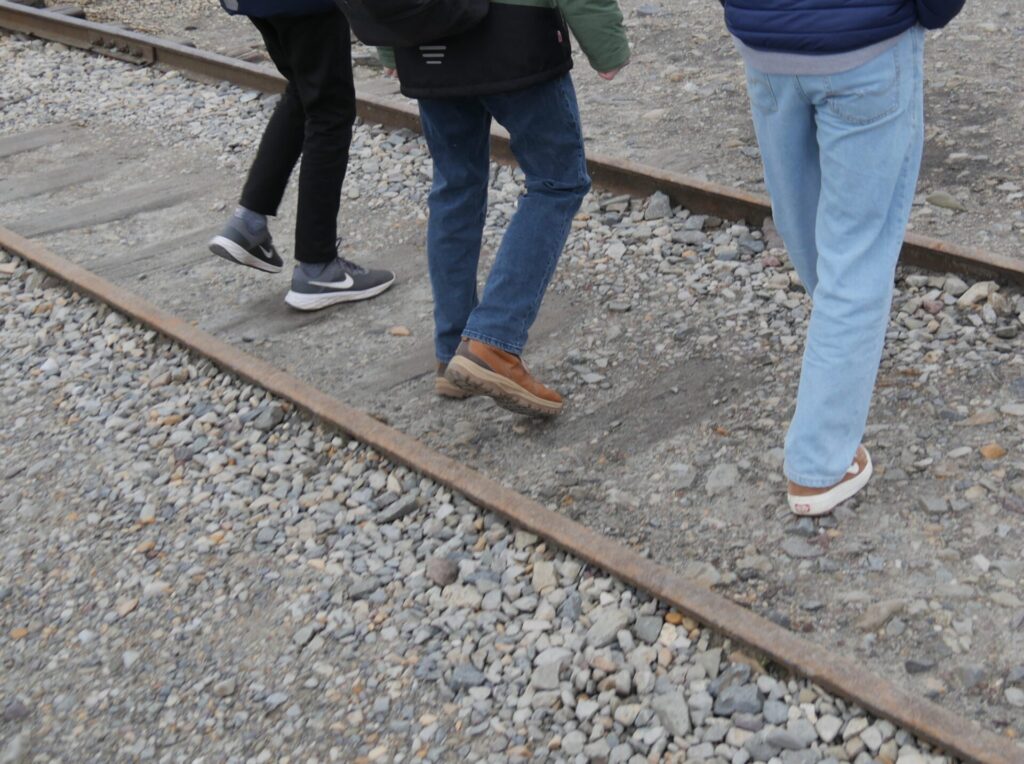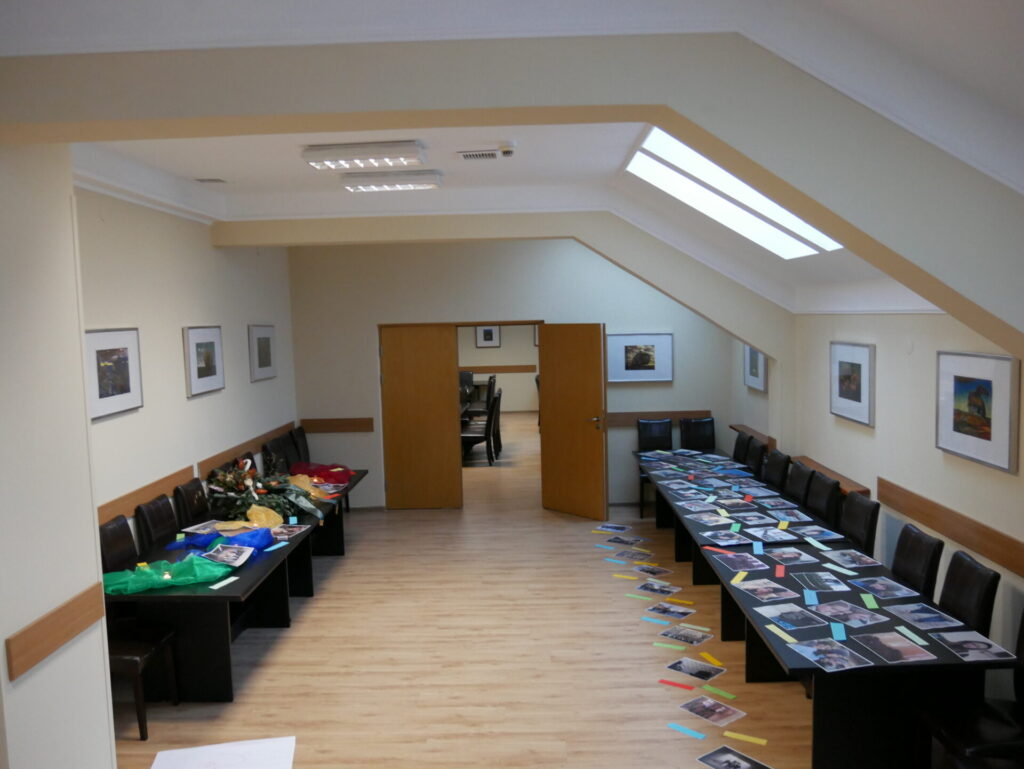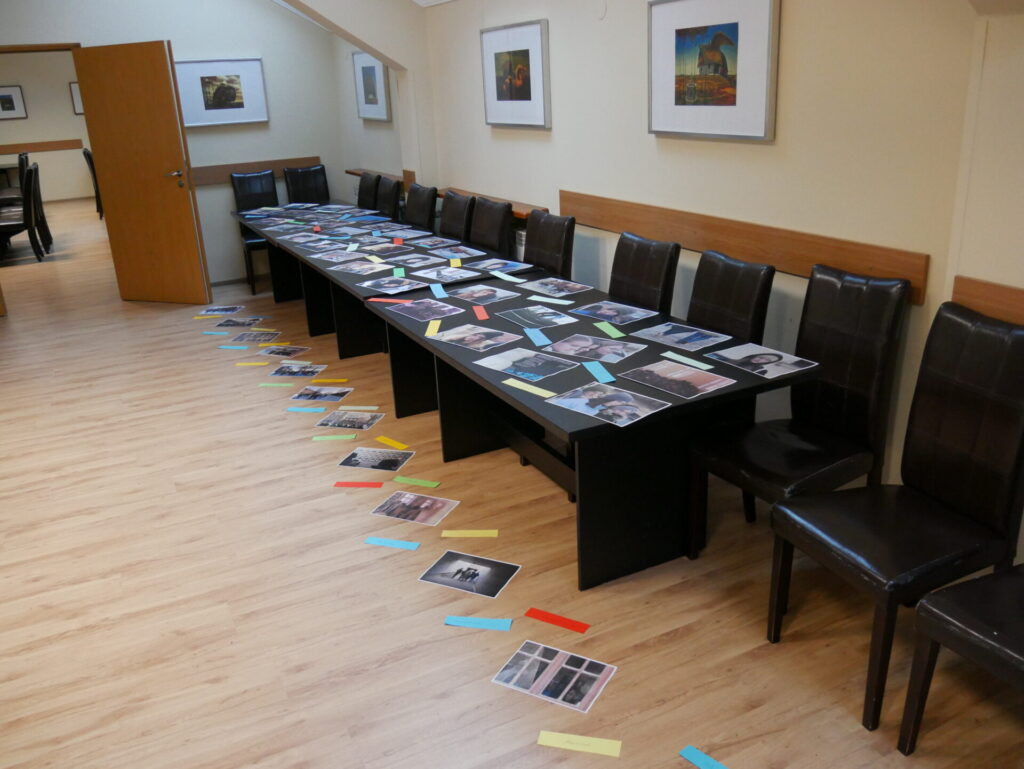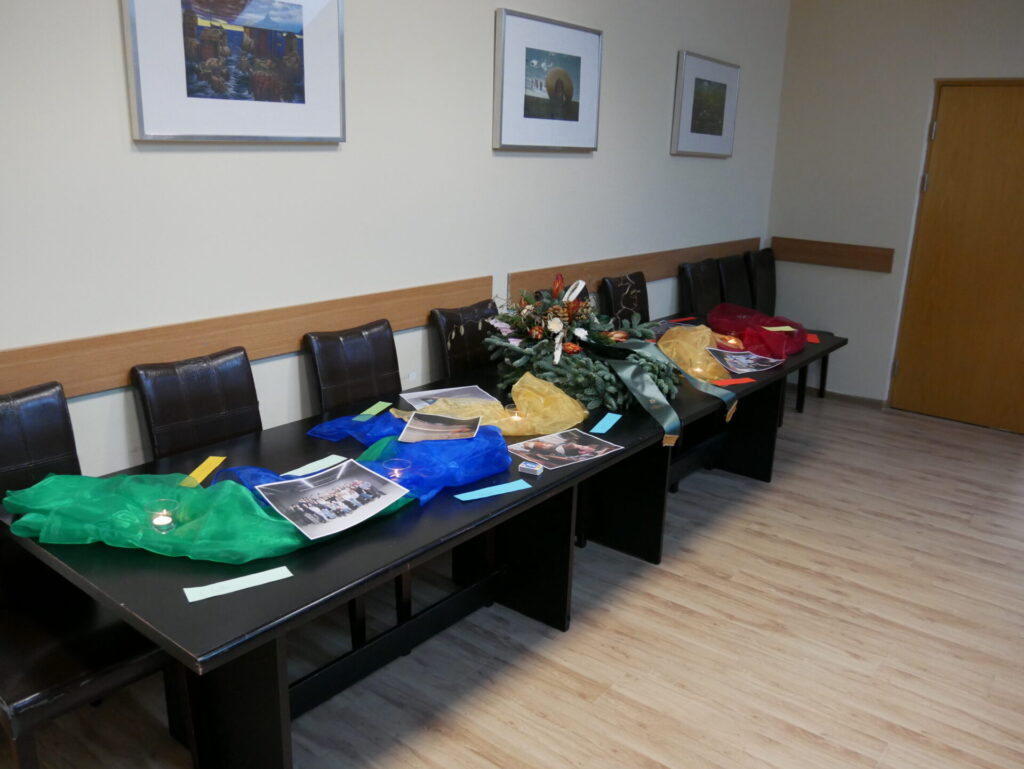
January 29, 2024 - February 2, 2024
From January 29 th until February 2 nd 2024, we hosted at our Centre a group of young people
from two 9th grades of Freies Evangelisches Limbacher Schulzentrum in Limbach,
Germany. Half of the group were students from Oberschule, the other from Gymnasium in
Limbach. As part of school activities, students of this institution in January take part in a
selected educational project. The young people who came to our House participated in a study trip entitled: “What do I have to do with Auschwitz; Building bridges between the past and the present.”
The project was coordinated by Bildungs-WG e.V. – an educational organization that focuses
on raising awareness of the importance of the history of World War II for society and
contemporary life. Through their activities, they also want to encourage project participants to
take pro-social actions, by facing personal accounts of witnesses, and history, the traces of are still visible in Oświęcim to this day.
Before coming to the Centre for Dialogue and Prayer, young people from Limbach took part
in a 3-day course preparing for this study trip. This made it easier for them to understand
issues related to Auschwitz, deepen their knowledge in this field during their stay in
Oświęcim, and visit the Memorial Site with a greater awareness of what Auschwitz means,
compared to people for whom a visit to this place is their first contact with this topic. The
group from Limbach learned about the symbolism of Auschwitz for various national groups
and the social connotations associated with this place.
What do I have to do with Auschwitz
On the first day of their stay, the participants also watched a film entitled “What do I have to
do with Auschwitz”, the culmination of the cooperation between Bildungs-WG e.V. with
Gymnasium Leukesdorf from previous years – as an introduction to the project. The study trip
program included a visit to the former German Nazi concentration and extermination camp
Auschwitz-Birkenau. Other points of the stay were a tour of the city of Oświęcim, including
the Synagogue and the Jewish Center, and a trip to Krakow, following the traces of its pre-war
Jewish history. There was also time for group reflections.



Students from Limbach also took part in workshops in the Collections department of the
Auschwitz-Birkenau Museum, where they learned about legal and illegal art created by
prisoners in the camp. They also learned about art pieces created by former prisoners after the
war, who recorded their experiences and memories of the camp through various artistic forms.
During their stay at our Centre students from Limbach were divided into 4 workshop groups.
Each of them worked on recording their experiences and reflections from their visit to the
Memorial using various means of artistic expression:
“Numbers Become Destiny”
During the “Numbers Become Destiny” workshop, young people tried to use art to show the
meaning of numbers related to Auschwitz and the history of World War II in order to better
understand their message. In the context of Auschwitz, each number is inextricably linked t
personal, human suffering. Artistic forms of expression included graphics, drawings, statistics
and other artistic projects. Young people focused on finding connections and similarities between different numbers, which would allow them to better understand their meaning and
the message they convey. They asked themselves, among other things, what it means that
approximately 1.1-1.5 million people died in Auschwitz. How to present this number through
art to make sense of the number of victims? By using their creativity, the students tried to
cover the symbolism of the numbers associated with the Memorial so that they would take on
a more personal and human dimension. They wanted to emphasize that each number reflects
the tragedy of each victim and they are not just dry facts.



Photographic project “Auschwitz and what does it have to do with us”
In this group, the focus was on pictures and motives for taking a given photography, techniques of taking photos and grouping them. Students tried to convey their emotions and impressions after visiting the Memorial in the form of a collage, expanded with the knowledge they acquired about the horror of the Holocaust and their own reflections. By adding descriptions and drawings to the photos, they tried to answer the question of what Auschwitz has to do with our lives today. Participants took photos mainly using smartphones.
“Creative Journal”
The task of group was to design a Creative Journal using colored crayons, markers,
watercolor paints, fineliners, pencils and scrapbooks. In this way, the young people processed
their impressions of what they saw in Auschwitz and tried to answer the question of what
impact the knowledge they acquired during their visit to the former German Nazi
concentration and extermination camp Auschwitz Birkenau had on their everyday lives.
Auschwitz – putting into words what cannot be said”
As part of this workshop, students learned the poem “On Good Powers” by Dietrich
Bonhoeffer. They also learned about the author’s life situation to better understand the context
in which this work was created. The students’ task was to compose a poem showing their own
reflections on Bonhoeffer’s work and the knowledge they had acquired about Auschwitz.
Then the students presented their poems or verses from “On Good Powers” that particularly
appeal to them, on canvas, writing them in calligraphy and painting the background with
watercolors.
